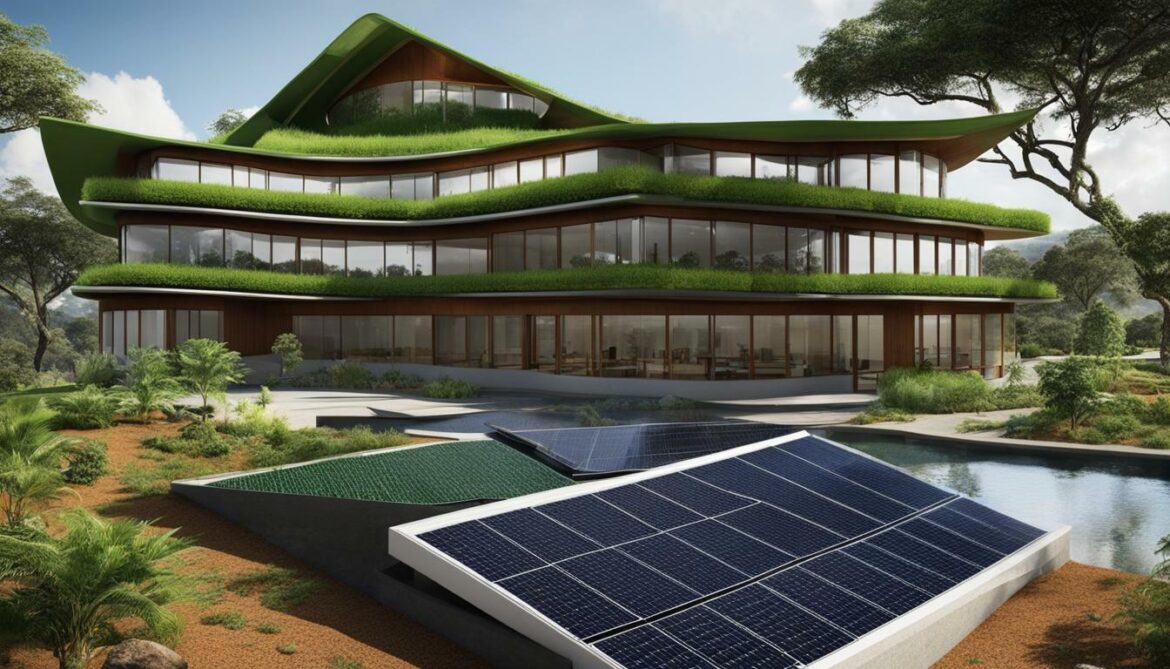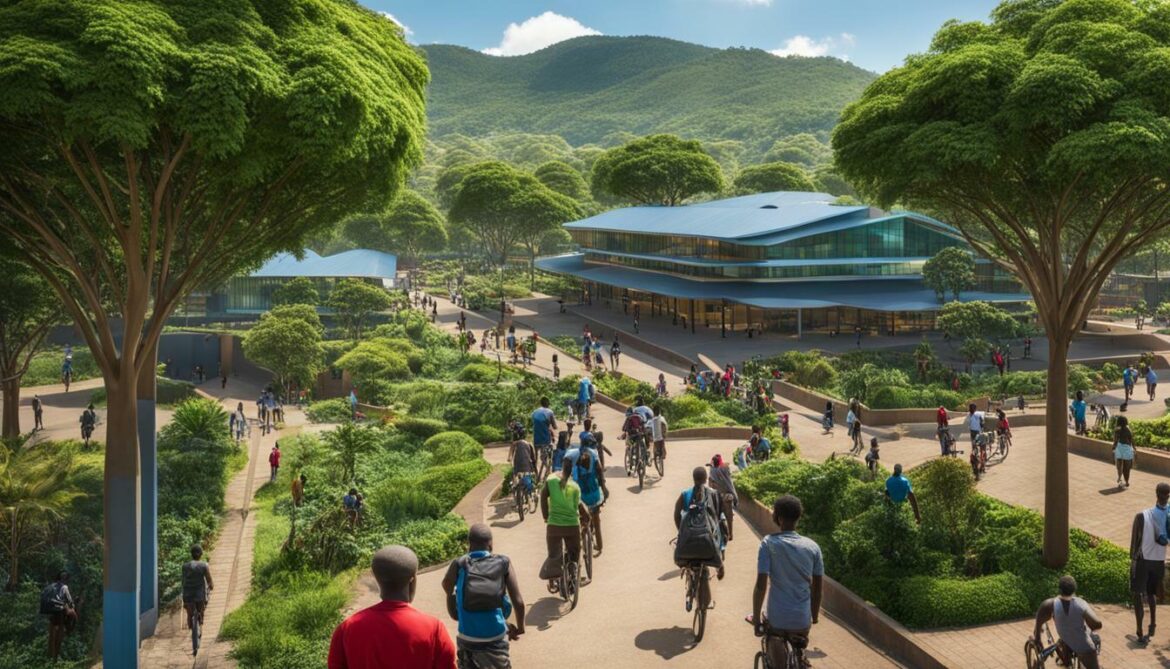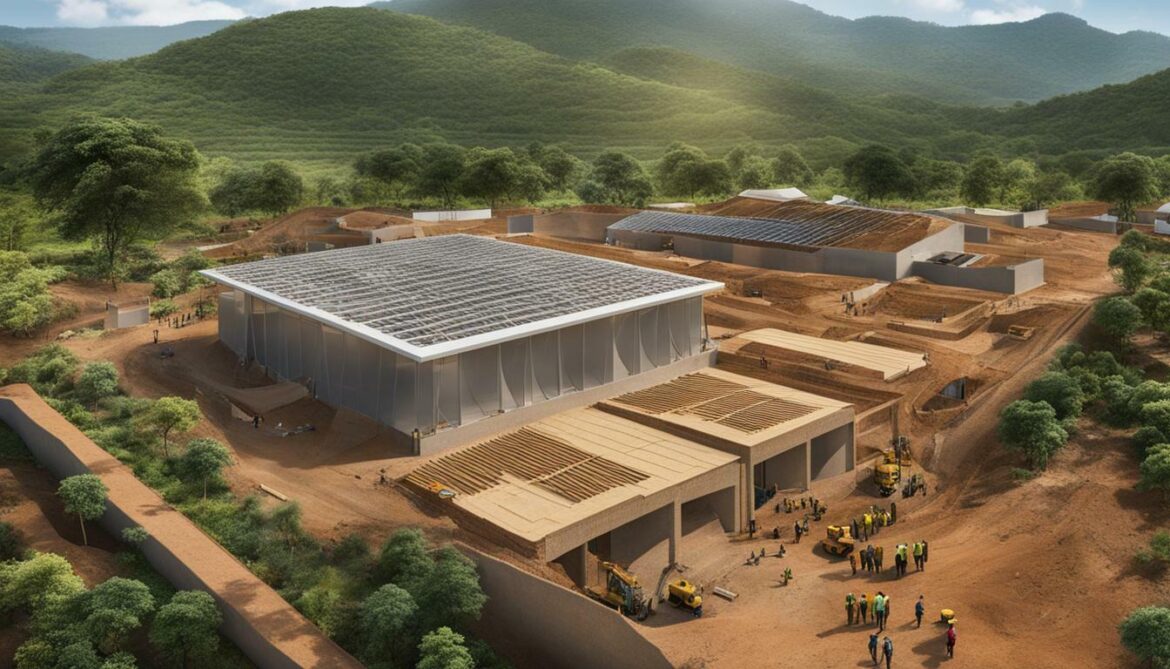Welcome to the fascinating journey of Eswatini (formerly Swaziland) Green Building History, where we dive into the nation’s remarkable eco-friendly architecture and sustainable construction practices. Eswatini’s green building tradition can be traced back to the early settlements of the Swazi people in the region. The Swazi settlers established their kingdom in the mid-18th century and expanded their territory under the leadership of Ngwane III. The country has a strong connection to the land and has practiced sustainable agriculture for centuries.
Eswatini, now a developing country, is classified as a lower-middle income economy. The nation takes pride in its membership in various international organizations focused on environmental conservation and sustainable development. The government is actively promoting green building practices and creating a more sustainable built environment. Through the use of renewable materials and the construction of energy-efficient buildings, Eswatini aims to reduce its carbon footprint and contribute to a greener future.
Key Takeaways:
1. Eswatini’s green building history can be traced back to the early settlements of the Swazi people.
2. The country has a strong emphasis on sustainable agriculture and renewable materials.
3. Eswatini is classified as a lower-middle income economy and is a member of various international organizations focused on environmental conservation and sustainable development.
4. The government of Eswatini is actively promoting green building practices to create a more sustainable built environment.
5. The nation’s commitment to reducing its carbon footprint is reflected in the construction of energy-efficient buildings.
With a rich history and a forward-thinking approach, Eswatini continues to make strides in sustainable construction and eco-friendly architecture. Join us on this journey as we explore the past, present, and future of green building in Eswatini.
The Early Settlements and Sustainable Agriculture
The history of green building in Eswatini (formerly Swaziland) dates back to the early settlements of the Swazi people, whose strong connection to the land laid the foundation for sustainable construction and environmental design practices. The Swazi settlers arrived in the region in the mid-18th century and established a kingdom that thrived on sustainable agriculture.
The Swazi people understood the importance of preserving the environment and utilized renewable materials in the construction of their dwellings. Their homes were built using locally sourced materials such as thatch, mud, and wood. These materials not only provided durability but also minimized the impact on the surrounding ecosystems.
| Key Points |
Benefits |
| Use of renewable materials |
Reduced environmental impact and sustainability |
| Connection to the land |
Promotion of eco-friendly practices |
| Emphasis on sustainable agriculture |
Food security and environmental preservation |
This deep-rooted connection to the land and sustainable practices has paved the way for modern-day Eswatini’s efforts towards green construction. The country’s commitment to sustainable development can be seen in the use of renewable materials and the construction of energy-efficient buildings.
Eswatini, as a developing country, recognizes the importance of creating a sustainable built environment. The government has implemented initiatives to promote green building practices, with a focus on reducing the country’s carbon footprint. By embracing eco-friendly architecture and environmental design, Eswatini is setting an example for sustainable development in the region and beyond.
Expansion and Economic Development
Under the leadership of Ngwane III, Eswatini (formerly Swaziland) experienced significant territorial expansion, which played a crucial role in shaping its green building practices and commitment to maintaining a low carbon footprint. This expansion provided the nation with the opportunity to develop its infrastructure in an environmentally conscious manner, with a focus on sustainable construction and design.
The government of Eswatini recognized the importance of minimizing the environmental impact of its economic growth and enacted policies and regulations that promote green construction practices. These practices include the use of renewable materials, energy-efficient buildings, and waste management strategies that reduce the carbon footprint of construction projects.
One notable example of Eswatini’s commitment to green building is the construction of the Green Sports Hub, a state-of-the-art sustainable development project that incorporates renewable energy systems and eco-friendly materials. This landmark project serves as a testament to the nation’s dedication to creating a built environment that is both aesthetically pleasing and environmentally sustainable.
Table: Key Initiatives for Green Construction in Eswatini
| Initiative |
Description |
| Renewable Energy Incentives |
Eswatini offers incentives to encourage the use of renewable energy technologies in buildings, such as solar panels and geothermal heating systems. |
| Green Building Certifications |
The government has established a green building certification program to recognize and promote buildings that meet specific environmental performance standards. |
| Waste Management Regulations |
Eswatini has implemented regulations to ensure proper waste management during construction, including recycling initiatives and responsible disposal of construction waste. |
| Public-Private Partnerships |
The government actively collaborates with private sector stakeholders to promote sustainable construction practices and develop innovative solutions for green building projects. |
Eswatini’s commitment to green building practices has not only contributed to its environmental sustainability but has also attracted international recognition and collaboration. The nation is actively involved in various international associations and initiatives focused on environmental conservation and sustainable development. Through these partnerships, Eswatini continues to learn from and share its experiences with other countries, furthering its progress towards a greener future.

As a developing country, Eswatini (formerly Swaziland) prioritizes sustainable development and has taken significant steps to embrace green building practices. The use of renewable materials and the construction of energy-efficient buildings contribute to the nation’s environmental goals. Eswatini recognizes the importance of creating a built environment that minimizes its carbon footprint and promotes a more sustainable future.
The government of Eswatini has implemented various initiatives to promote sustainable construction practices. By encouraging the use of renewable materials, such as bamboo and locally-sourced timber, the country aims to reduce its reliance on non-renewable resources. These materials provide a more sustainable alternative to traditional construction materials, resulting in lower environmental impact and long-term economic benefits.
Additionally, energy-efficient buildings have become a key focus in modern-day Eswatini. The government promotes the adoption of sustainable design principles, including proper insulation, efficient lighting systems, and renewable energy sources. By integrating these features into construction projects, Eswatini aims to reduce energy consumption and mitigate the effects of climate change.
With its commitment to sustainable development, Eswatini is paving the way for environmentally-conscious construction practices. By prioritizing the use of renewable materials and energy-efficient building designs, the nation is demonstrating its dedication to creating a more sustainable and eco-friendly future for its citizens and the planet.
Table: Green Building Initiatives in Eswatini
| Initiative |
Description |
| Renewable Material Showcase |
Eswatini organizes exhibitions to showcase the benefits of using renewable materials in construction, encouraging architects, builders, and developers to adopt eco-friendly practices. |
| Energy Efficiency Certification |
The government has introduced a certification system to assess the energy efficiency of buildings, incentivizing developers to incorporate sustainable features into their projects. |
| Green Building Training |
Eswatini offers training programs for architects, engineers, and construction professionals to enhance their knowledge and skills in green building practices. |
By implementing these initiatives, Eswatini is fostering a culture of sustainability within its construction industry. The nation’s commitment to green building practices sets an example for other developing countries and demonstrates the importance of prioritizing the environment in urban development.

The government of Eswatini recognizes the importance of green building and has implemented initiatives to promote sustainable construction and environmental conservation. By joining international organizations focused on sustainable development, Eswatini highlights its commitment to creating a greener future.
One of the key government initiatives in Eswatini is the promotion of energy-efficient buildings. The country aims to reduce its carbon footprint by encouraging the use of renewable energy sources and implementing energy-saving technologies. This not only helps to protect the environment but also contributes to the country’s goal of becoming more self-sufficient in terms of energy production.
Eswatini has also placed a strong emphasis on the conservation of natural resources. The government has implemented policies and regulations to protect the country’s forests, rivers, and other natural habitats. This includes promoting sustainable construction practices that minimize the impact on the environment and encourage the use of locally sourced, renewable materials.
| Government Initiatives |
International Associations |
- Promotion of energy-efficient buildings
- Implementation of renewable energy sources
- Adoption of energy-saving technologies
- Conservation of natural resources
|
- Member of United Nations Environment Programme (UNEP)
- Partner of Sustainable Energy for All (SE4ALL)
- Participant in the African Ministerial Conference on the Environment (AMCEN)
- Member of the Global Green Growth Institute (GGGI)
|
By actively participating in international associations and collaborating with other countries, Eswatini is able to exchange knowledge and expertise in sustainable development. This allows the country to learn from best practices and implement innovative solutions to address environmental challenges.
The government’s efforts towards sustainable development and environmental conservation have not only made Eswatini a role model for other developing countries but also contribute to the global commitment to combat climate change and create a more sustainable future for all.

In conclusion, the history of green building in Eswatini (formerly Swaziland) showcases the nation’s dedication to sustainable construction, eco-friendly architecture, and environmental design. From the early settlements and sustainable agriculture practices to modern-day initiatives and government support, Eswatini’s commitment to green building reflects its vision for a greener and more sustainable future.
The Swazi people, who established their kingdom in the mid-18th century, have long prioritized sustainable agriculture and the use of renewable materials in their dwellings. Their strong connection to the land and their respect for nature set the foundation for Eswatini’s green building practices.
As Eswatini continues to develop as a nation, it recognizes the importance of reducing its carbon footprint and promoting energy-efficient buildings. The government is actively implementing green construction practices, emphasizing the use of renewable materials and the creation of eco-friendly structures.
Eswatini’s commitment to sustainable development extends beyond its borders. The country is a member of various international organizations focused on environmental conservation and sustainable development, collaborating with other nations to create a more sustainable and equitable future.
FAQ
What is the history of green building in Eswatini?
The history of green building in Eswatini (formerly Swaziland) can be traced back to the early settlements of the Swazi people in the region. They have practiced sustainable agriculture for centuries and have a strong connection to the land.
What is the current economic status of Eswatini?
Eswatini is classified as a lower-middle income economy. It is a developing country that has a strong focus on environmental conservation and sustainable development.
What initiatives are the government taking to promote green building practices?
The government of Eswatini is taking steps to promote green building practices and create a more sustainable built environment. These initiatives include the use of renewable materials and the construction of energy-efficient buildings.
Is Eswatini a member of any international organizations focused on sustainability?
Yes, Eswatini is a member of various international organizations that focus on environmental conservation and sustainable development.
Source Links





















Post comments (0)